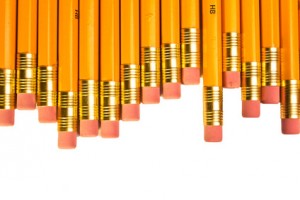 The goal of a bankruptcy proceeding is to obtain a discharge of debts.
The goal of a bankruptcy proceeding is to obtain a discharge of debts.
When a debt is discharged, it is no longer enforceable against the debtor personally.
Personal liability
When you have personal liability for a debt, a creditor with a judgment can use legal processes, like levy and garnishment, to reach your non exempt assets and earnings even though those assets were not pledged as collateral and the debt was unsecured.
The bankruptcy discharge eliminates the debtor’s personal liability for a discharged debt.
Permanent injunction
The bankruptcy discharge is a court injunction against certain actions relating to debts that existed before the bankruptcy was filed. The discharge injunction replaces the automatic stay that comes into place when a bankruptcy case is commenced.
The discharge injunction prevents the creditor from beginning or continuing any law suit to enforce a discharged debt against the debtor or the debtor’s property.
Any judgment as to a debt arising before the bankruptcy was commenced is void after the discharge.
The discharge encompasses not only debts that were liquidated as of the filing of the case, but any liability that arises from events before filing so long as the affected creditor, or would-be creditor, got notice of the bankruptcy.
Example: the liability of the debtor for an automobile accident in which he was at fault is discharged, even though the debt is unliquidated because there has not been a trial with respect to the accident. Likewise, the liability of the debtor on the pre petition guaranty of someone else’s debt is discharged.
Liens or in rem liability
Even though personal liability is discharged, most liens, the liability of an item of property for a debt secured by that property, pass unchanged through bankruptcy unless a court order modifies or voids them. See what debts are secured by liens?
So, after a bankruptcy discharge, a voluntary lien, like a mortgage, may remain a charge on an asset the debtor owned when the case was commenced.
Involuntary liens, like judgment liens or tax liens, remain a charge on assets that the debtor owned when the bankruptcy case was filed, but don’t attach to assets that the debtor acquires after the bankruptcy discharge.
Illustrations
- A home equity loan remains as a lien on the real property after a bankruptcy discharge. If the loan is not paid, the lender cannot sue the discharged debtor to attempt to collect the debt out of current wages because the discharge has eliminated the debtor/borrower’s personal liability for the loan. The creditor can foreclose on the lien on the pledged property, however.
- A judgment lien may remain a charge on assets owned before the bankruptcy, but does not attach to assets acquired after the bankruptcy is filed.
This entire discussion, of course, relates to dischargeable debts.
Some debts are not dischargeable in bankruptcy and they are unaltered by the bankruptcy discharge and remain just as valid as they were before the bankruptcy.
Read more
Debts you cannot discharge in bankruptcy
Support and other family law claims
Image © nbiebach – Fotolia.com.
